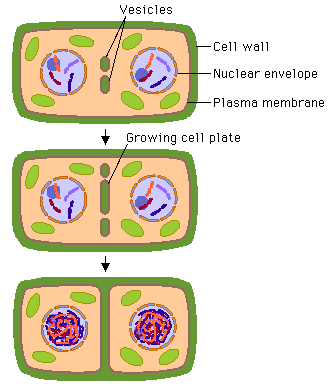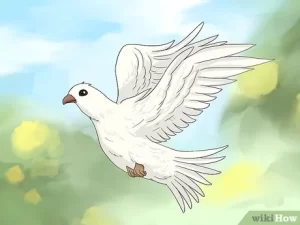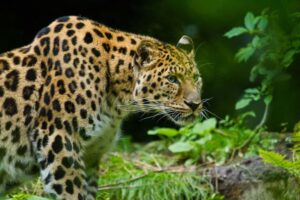
Cytokinesis: Differences Between Plant and Animal Cells
Cytokinesis is a crucial process in the cell cycle that follows mitosis and meiosis, where the cytoplasm of a parental cell is divided into two daughter cells. While the fundamental goal of cytokinesis remains the same across different organisms, the mechanisms by which it occurs differ significantly between plant and animal cells. This article provides an in-depth exploration of the differences in cytokinesis between these two types of cells, including the underlying mechanisms, structures involved, and their biological implications.
Understanding Cytokinesis
Cytokinesis is the final step of cell division, ensuring that each daughter cell receives an adequate share of the cytoplasmic contents, including organelles, proteins, and other cellular components. It is essential for growth, tissue repair, and reproduction in multicellular organisms.
Key Stages of Cytokinesis
Cytokinesis can be divided into several key stages:
- Initiation: The process begins with the identification of the division plane, which is determined by the mitotic spindle’s orientation.
- Contraction and Division: The cell undergoes physical changes that lead to the separation of the cytoplasm.
- Completion: The final separation of the daughter cells occurs, often accompanied by the reformation of cellular structures.
Cytokinesis in Animal Cells
In animal cells, cytokinesis is characterized by the formation of a cleavage furrow, which is a constriction that forms around the middle of the cell. This process is facilitated by a structure known as the contractile ring, composed primarily of actin and myosin filaments.
Mechanism of Cytokinesis in Animal Cells
- Formation of the Cleavage Furrow: As the cell prepares to divide, the contractile ring assembles just beneath the plasma membrane at the cell’s equator.
- Contraction of the Contractile Ring: The actin and myosin filaments within the ring contract, pulling the plasma membrane inward and forming the cleavage furrow.
- Pinching Off: The cleavage furrow deepens and eventually pinches the cell into two separate daughter cells, each containing a nucleus and a share of cytoplasmic contents.
- Membrane Insertion: As the cleavage furrow forms, new membrane material is inserted to accommodate the increasing surface area of the daughter cells.
Cytokinesis in Plant Cells
In contrast to animal cells, plant cells undergo cytokinesis through the formation of a cell plate. This process is unique due to the presence of a rigid cell wall that surrounds plant cells.
Mechanism of Cytokinesis in Plant Cells
- Formation of the Phragmoplast: During late telophase, microtubules and vesicles from the Golgi apparatus assemble at the center of the cell, forming a structure known as the phragmoplast.
- Vesicle Fusion: Vesicles containing cell wall materials (such as pectins and hemicelluloses) fuse at the center of the cell, creating a cell plate.
- Expansion of the Cell Plate: The cell plate grows outward toward the existing cell walls, eventually fusing with them and forming two distinct daughter cells.
- Formation of New Cell Walls: As the cell plate matures, it develops into a new cell wall, separating the two daughter cells.
Key Differences Between Cytokinesis in Plant and Animal Cells
The differences between cytokinesis in plant and animal cells can be summarized as follows:
| Feature | Animal Cells | Plant Cells |
|---|---|---|
| Division Method | Cleavage furrow formation | Cell plate formation |
| Mechanism | Contractile ring (actin and myosin) | Phragmoplast (microtubules and vesicles) |
| Direction of Division | Centripetal (from outside to center) | Centrifugal (from center to outside) |
| Cell Membrane Behavior | Membrane pinches off | Membrane remains intact until cell plate forms |
| Final Structure | Two separate daughter cells | Two daughter cells with new cell walls |
Biological Implications of Cytokinesis Differences
The differences in cytokinesis between plant and animal cells have significant biological implications:
- Cell Structure: The rigid cell wall in plants necessitates a different approach to cell division, allowing for the maintenance of structural integrity during the process.
- Growth and Development: The method of cytokinesis affects how tissues grow and develop in plants versus animals. For example, the formation of a cell plate allows for the expansion of plant cells, which is crucial for growth.
- Adaptation to Environment: The differences in cytokinesis reflect adaptations to the specific needs and environments of plant and animal cells. For instance, the ability of plant cells to form a new cell wall allows them to maintain turgor pressure, which is essential for their structural support.
Conclusion
Cytokinesis is a vital process in cell division that varies significantly between plant and animal cells. Understanding these differences enhances our knowledge of cellular biology and the adaptations that have evolved in different organisms. By studying cytokinesis, researchers can gain insights into growth, development, and the fundamental processes that sustain life.
FAQ Section
What is cytokinesis?
Cytokinesis is the process by which the cytoplasm of a parental cell is divided into two daughter cells following mitosis or meiosis.
How does cytokinesis differ between plant and animal cells?
In animal cells, cytokinesis occurs through the formation of a cleavage furrow, while in plant cells, it occurs via the formation of a cell plate.
What structures are involved in cytokinesis in animal cells?
The primary structure involved in animal cell cytokinesis is the contractile ring, composed of actin and myosin filaments.
What structures are involved in cytokinesis in plant cells?
Plant cells utilize a phragmoplast, which is an assembly of microtubules and vesicles that facilitate the formation of the cell plate.
Why do plant cells form a cell plate?
Plant cells form a cell plate to create a new cell wall that separates the two daughter cells, as they are surrounded by a rigid cell wall.
What is the role of the contractile ring in animal cells?
The contractile ring constricts the cell membrane, leading to the formation of the cleavage furrow and ultimately pinching the cell into two daughter cells.
What happens if cytokinesis does not occur?
If cytokinesis does not occur, the result is a multinucleate cell, which can lead to abnormal cell function and growth.
How do cytokinesis processes affect tissue growth in plants and animals?
The differences in cytokinesis processes influence how tissues grow and develop, with plant cells able to expand due to the formation of a cell plate, while animal cells undergo a more constrictive process.
Can cytokinesis occur without mitosis?
While cytokinesis typically follows mitosis, some cells can undergo mitosis without cytokinesis, resulting in multinucleated cells.
Where can I find more information about cytokinesis?
For more detailed information, you can refer to the Wikipedia page on Cytokinesis.


